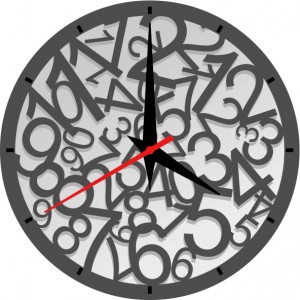The Time of Renewal and the Renewal of Time (Part 1)
By Asher Crispe: September 20, 2012: Category Decoding the Tradition, Inspirations
 When a woman conceives, Jewish custom is to wish her “in a good hour (time)’ [b’shaah tovah] with the intention that the birth should happen at the right time and not be either premature or delayed. Moreover, beyond the physical well being of both mother and baby, the hour of the birth should be auspicious on a cosmic spiritual level. The desideratum of every unique soul is to descend into the world at a non-arbitrary moment. The ‘worlding’ of an individual demands exact timing. Hence, birthdays truly are a cause for a meta-celebration. One’s soul root remains tethered atemporally above even as a person repels down into our somatic temporal condition. Nonetheless, joy is felt on both ends.
When a woman conceives, Jewish custom is to wish her “in a good hour (time)’ [b’shaah tovah] with the intention that the birth should happen at the right time and not be either premature or delayed. Moreover, beyond the physical well being of both mother and baby, the hour of the birth should be auspicious on a cosmic spiritual level. The desideratum of every unique soul is to descend into the world at a non-arbitrary moment. The ‘worlding’ of an individual demands exact timing. Hence, birthdays truly are a cause for a meta-celebration. One’s soul root remains tethered atemporally above even as a person repels down into our somatic temporal condition. Nonetheless, joy is felt on both ends.
Yet all of this can be flipped on its head. Rather than viewing this expression regarding the timing of birth as the end of a physical pregnancy, we can see it as the temporalizing of our mental conceptions. The mother figure in Kabbalah is binah or ‘understanding.’ She conceives as an act of cognition that takes place within each and everyone of us. Furthermore, she cannot conceive of everything all at once. Likened to hearing–where our auditory processing only captures a limited amount of information at one time–we have to hear words spoken one after the next. Try to say too much all at once or have people talking over one another and we quickly get confused. My conceptions have to be well timed. As a result, to reconceive of something would amount to more than rethinking it. It would mean giving it time.
There are many appointed times in the Torah that occasion our thinking of time. One such event where our conceptions are greeted with a blessing to be realized in good time (or a well suited time wherein our conceptions can be realized) is Rosh Hashanah. This holiday is famous for being a time of conceiving for three Jewish women: Sarah, Rochel (Rachel) and Chana. We might even suggest that it is the ‘time’ that aids in the conception of ‘time.’
While most know Rosh Hashanah as a ‘new year’ marker, a threshold that we automatically cross over just like one might fly over the international date line that is already firmly established, this couldn’t be further from the truth. Rosh Hashanah is the locus of time production. Time, like everything else, is created. A whole year exists at the level of pregnant potential. We are blessed to conceive of the forthcoming year and experience it in embryonic form.
Rosh means ‘head.’ Given that this long, ‘long day’ (yoma arichta) manifests an entire year in potentia we are dealing will an exceptional example of time dilation. The compression rate retrofits the year into a 48 hour window which virtually simulates the possibilities of forthcoming events that will unfold in ‘real’ time. For those familiar with tools of digital film editing, the ability to speed up or slow down the frame rate and playback of a movie, whereby a two hour feature can be glimpsed at 2x, 4x, 8x, 16x, 32x the normal speed, is readily attainable. So if you’re given 10 minutes to watch what normally takes hours, it’s now no problem thanks to this modern day invention.
Rosh Hashanah works in a remarkably similar fashion. Not only is the temporalizing of time adjustable, we view it in edit mode. Furthermore, edit mode is a fully accessible feature past Rosh Hashanah all the way to Yom Kippur when a final cut is archived. When push comes to shove, last minute alternations can sometimes be made all the way to Hoshana Rabbah during the Sukkot holiday on the 21st of the Hebrew month of Tishrei. However, even then it is only the ‘conception’ of time (specifically the year).
If time can ‘conceive’ then it has to have some catalyst, some act of fertilization. Contrary to the perspective that regards time as a uniform, stable, linear series of nows that go on forever, Jewish mystical intuitions have charged that time bursts on the scene like a montage of jump cuts. As a feature in the fabric of Creation that itself undergoes continuous recreation, time pulsates in an out of existence in a state of ‘incessant interruption.’
Therefore, it should not come as a surprise that the word for ‘time’ in the expression ‘Rosh Hashanah’ is shanah or ‘year.’ Shanah is akin to the word shinui which signifies ‘change.’ Collectively these two Hebrew words translate as a ‘head of change’ where a head can be understood as a state of mind or headspace. My consciousness on this day is one of ‘time’ as ‘change.’ This idea hearkens back to a threefold model from the early kabbalistic work Sefer Yetzirah that can be employed in all sorts of interpretive contexts–namely, that everything possesses the dimensions of world (olam), year (shanah) and soul (nefesh).
The extensive commentary tradition on Sefer Yetzirah decodes these three terms as follows: 1) ‘world’ refers to space extension in three dimensions of length, width and depth 2) ‘year’ corresponds to time and 3) ‘soul’ relates to the consciousness of the observer.
Why is time in this model called ‘year?’ As we explained above ‘year’ is etymologically linked to ‘change.’ This then helps us make sense of the kabbalistic depiction of time as the soul of space. Space as the body is static without the soul of time to animate it. We see time through space just as the soul is experienced through the body. Finally, the soul of the soul is the consciousness of the observer. The human subject, in particular, is situated within space-time. But more than that, the human subject participates in the situating of space-time.
When our head (rosh) is filled with thoughts of change (shanah/shinui) it is on account of the bridging of two events in Creation. The twofold Creation could be thought of as inner and outer aspects of reality. The first of these is the shell of the world that was installed, according to the Sages, on the 25th of the month of Elul in the week leading up to Rosh Hashanah. This superficial dimension of reality was intended to be provisional and exist on the edge of chaos. The stabilization factor comes in the form of the creation of Adom/Adam and Chava/Eve on the first ‘day’ of Rosh Hashanah.
 The primordial human pair represent the most elemental founding of the human condition. We are the conscious observers brought to anchor the universe. In the spirit of the Anthropic Cosmological Principle that requires our participation to make Creation sustainable, we see that the laws of physics (including the space-time we occupy) do not really make sense as science is starting to realize, unless the soul or human subject is also Created and can both be situated and situate them.
The primordial human pair represent the most elemental founding of the human condition. We are the conscious observers brought to anchor the universe. In the spirit of the Anthropic Cosmological Principle that requires our participation to make Creation sustainable, we see that the laws of physics (including the space-time we occupy) do not really make sense as science is starting to realize, unless the soul or human subject is also Created and can both be situated and situate them.
Our birth is the universe’s ‘conception.’ Our entry into the world alters the world. We are given time in the world but we also give time to the world. Our most distinguished ability is to be ‘world-forming’ as we participate in an open universe. Time is not impersonal (or at least it is only provisionally and externally impersonal). The week (shavuah) of Creation is also an oath (shavuah) or promise that binds impersonal and seemingly homogenous time to the inner sense of personal time (my time, your time, our time) such that we contribute to the deformalization of time, to its profoundly heterogenous character.
In Part Two we will investigate the body of time and the internal consciousness of temporality.
http://www.interinclusion.org/inspirations/the-time-of-renewal-and-the-renewal-of-time-part-2/
The Time of Renewal and the Renewal of Time (Part 1),













;)
;)
;)
;)
;)
;)
;)
;)
;)
;)

I remember as a kid being enthralled by the concept of a movie reel. How a complete motion picture can be made up of a bunch of static frames. Reading your article helped add perspective. To frame the frames 🙂 Just one question. What does “Lights, Camera, Action” correspond to?
“Lights, Camera, Action” would correspond to the three lower worlds of Creation, Formation and Action.